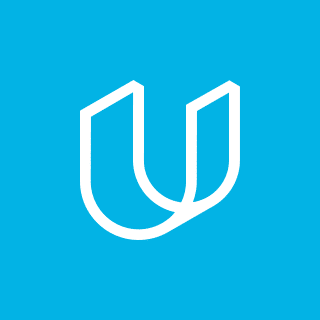
If you’ve ever wondered what kind of impact UX design can have on a company’s bottom line, consider this — 88% of online users who’ve had a poor experience on a website will be less likely to return. Knowing this, it’s easy to understand why so many companies are focusing on UX design.
As a UX designer, if you want to get the attention of recruiters and hiring managers, you’re going to need a UX design portfolio that stands out.
Here’s what you need to know about putting together a winning UX design portfolio that helps you land your dream job.
Why You Need a UX Design Portfolio
Your UX design portfolio is a well-crafted and summarized presentation of anywhere from three to five projects you’ve worked on. (If you’re newer to the field showcasing one or two projects is fine.)
Your portfolio should highlight the goals and objectives of each project, the process you used to craft a solution and the final outcome. Ideally, your portfolio should highlight your understanding of the six stages of the UX design process so that potential employers can see that you have a strong understanding of critical UX principles.
If this seems like a lot of work, keep in mind that to command a competitive UX design salary, your portfolio is proof of what you’re capable of and can give you the edge over other candidates.
The Nuts and Bolts of Your UX Design Portfolio
Your UX design portfolio needs to tell a story and illustrate the what, how and why of the projects you worked on.
Here’s what you should include for each:
- What: The problem you solved.
- How: Your approach to the project.
- Why: Your reasoning for that specific solution.
UX designers are expected to have a high degree of attention to detail, so your portfolio should reflect that. Use a consistent look and feel across all projects, and include impactful, high-quality images to enhance your storytelling.
If you aren’t sure what you should include, here’s the key information that needs to be covered for each project you plan to highlight:
- Project title
- Company, project type and date
- Your specific role on the project
- A project summary or overview including the goals and objectives
- The problem you were tasked with solving
- The solution
- The final results
Questions to Answer in Your UX Design Portfolio
While your UX design portfolio is meant to show the work you’ve done, it’s also the perfect opportunity to share a little bit about yourself. Consider including a succinct explanation about what drew you to UX design and why you love doing it. This helps you to personalize your portfolio and share something memorable about yourself.
In an interview scenario, there are some common questions you can expect
recruiters and hiring managers to have about the projects you’re showcasing. When creating your UX design portfolio, be proactive and ensure these questions are addressed in your materials.
Some questions you can answer include:
- What made the project successful?
- What obstacles did you encounter? How did you overcome them?
- What did you try that didn’t work?
- What did you learn?
- What would you do differently next time?
Showcase Your Talents With Your UX Design Portfolio
When creating your UX design portfolio, consider it an opportunity to celebrate your successes and reflect on the lessons you’ve learned. This is your calling card for potential employers, so you need to let your talent shine. Most of all, don’t forget to keep your portfolio updated so it’s ready to go whenever opportunity knocks!
Are you interested in pursuing an exciting and creative career in UX design?
The Udacity UX Design Nanodegree teaches you how to design impactful user experiences for products in today’s digital world and build a portfolio that showcases your ability to transform user research to high-fidelity interactive designs.






